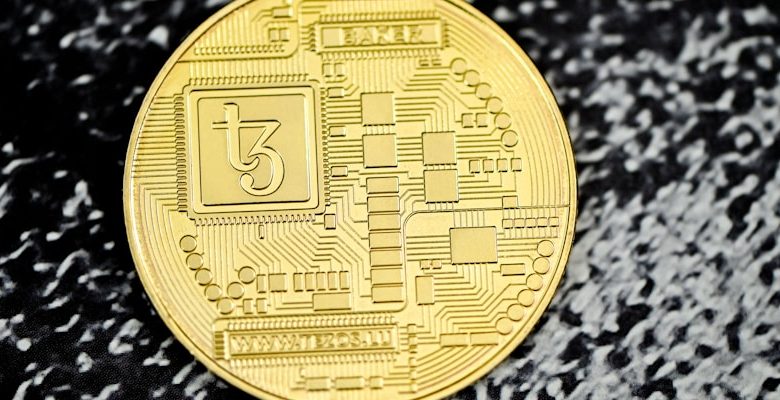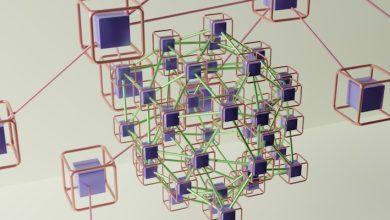Harmony (ONE): The Sharding-Based Blockchain

- Understanding the Basics of Harmony (ONE)
- Exploring the Sharding Technology Behind Harmony (ONE)
- The Advantages of Sharding in Harmony (ONE)
- How Harmony (ONE) Ensures Scalability and Security
- The Future Potential of Harmony (ONE) in the Blockchain Space
- Comparing Harmony (ONE) with Other Sharding-Based Blockchains
Understanding the Basics of Harmony (ONE)
Harmony (ONE) is a sharding-based blockchain that aims to address the scalability issues faced by traditional blockchains like Bitcoin and Ethereum. To understand how Harmony achieves this, it is essential to grasp the basics of harmony.
Harmony’s sharding technology involves splitting the blockchain network into smaller partitions called shards. Each shard processes a portion of transactions independently, allowing the network to scale horizontally. This approach significantly increases the transaction processing speed and overall throughput of the blockchain.
Furthermore, Harmony utilizes a consensus mechanism known as Proof of Stake (PoS) to secure the network and validate transactions. In PoS, validators are chosen to create new blocks based on the number of tokens they hold and are willing to “stake” as collateral. This incentivizes validators to act honestly and maintain the integrity of the network.
Another key feature of Harmony is its use of a secure and efficient cryptographic algorithm called VRF (Verifiable Random Function). VRF ensures the randomness and unpredictability of shard assignments, preventing malicious actors from exploiting the system.
Overall, Harmony’s innovative approach to blockchain technology sets it apart from other projects in the space. By combining sharding, PoS, and VRF, Harmony aims to create a scalable, secure, and decentralized blockchain platform that can support a wide range of applications and use cases.
Exploring the Sharding Technology Behind Harmony (ONE)
The sharding technology behind Harmony (ONE) is a key feature that sets it apart from other blockchain platforms. Sharding is a method of partitioning data to improve scalability and efficiency. In the case of Harmony, sharding allows the network to process transactions in parallel, significantly increasing the throughput of the blockchain.
By dividing the network into smaller “shards,” Harmony can achieve a higher level of decentralization while maintaining high performance. Each shard is responsible for processing a subset of transactions, which are then combined to form a complete block. This distributed approach to consensus ensures that the network remains secure and resilient against attacks.
One of the main advantages of sharding is its ability to scale linearly with the number of nodes in the network. This means that as the network grows, Harmony can easily accommodate more users and transactions without sacrificing speed or security. Additionally, sharding helps to reduce latency and congestion on the network, leading to a smoother user experience.
Overall, the sharding technology behind Harmony (ONE) is a game-changer for blockchain scalability and performance. By leveraging this innovative approach to consensus, Harmony is able to offer a fast, secure, and decentralized platform for a wide range of applications. Whether you’re a developer looking to build on the blockchain or a user looking for a seamless experience, Harmony’s sharding technology has you covered.
The Advantages of Sharding in Harmony (ONE)
Sharding is a groundbreaking technology implemented by Harmony (ONE) that offers numerous advantages for blockchain networks. By breaking down the blockchain into smaller, more manageable parts called shards, Harmony can significantly increase the speed and efficiency of transactions. This means that users can enjoy faster processing times and lower fees when using the Harmony blockchain.
One of the key benefits of sharding in Harmony is improved scalability. With traditional blockchains, as the number of users and transactions increases, the network can become congested, leading to slower processing times and higher fees. By using sharding, Harmony can easily scale to accommodate a growing user base without sacrificing performance.
Additionally, sharding enhances security on the Harmony blockchain. Each shard is responsible for processing only a portion of the transactions, reducing the risk of a single point of failure. This decentralized approach makes it much more difficult for malicious actors to manipulate the network, ensuring that user funds and data are kept safe.
Furthermore, sharding in Harmony enables parallel processing of transactions across different shards. This means that multiple transactions can be processed simultaneously, further improving the overall speed and efficiency of the network. Users can enjoy near-instantaneous confirmation of transactions, making Harmony a highly attractive platform for decentralized applications and smart contracts.
How Harmony (ONE) Ensures Scalability and Security
Harmony (ONE) ensures scalability and security through its innovative sharding technology. Sharding allows the blockchain to be divided into smaller sections, called shards, which can process transactions in parallel. This significantly increases the throughput of the network, enabling Harmony to handle a large number of transactions per second.
Furthermore, Harmony implements a secure and efficient consensus mechanism known as Proof of Stake (PoS). In this system, validators are chosen based on the number of tokens they hold, as well as other factors. This reduces the risk of centralization and ensures that the network remains secure against attacks.
Another key feature of Harmony is its use of cryptographic techniques to enhance security. By encrypting data and transactions, Harmony protects sensitive information from unauthorized access. This ensures the privacy and integrity of the blockchain, making it a reliable platform for users.
The Future Potential of Harmony (ONE) in the Blockchain Space
Looking ahead, there is immense potential for Harmony (ONE) to make a significant impact in the blockchain space. With its innovative sharding technology, Harmony has the capability to revolutionize the way blockchain networks operate, offering increased scalability and efficiency. This could lead to a wider adoption of blockchain technology across various industries, paving the way for more decentralized applications and services to thrive.
Furthermore, Harmony’s focus on cross-chain compatibility and interoperability opens up new possibilities for collaboration and integration with other blockchain networks. This could result in a more interconnected and seamless ecosystem where different blockchains can communicate and transact with each other more effectively, ultimately benefiting the entire blockchain community.
As Harmony continues to develop and enhance its platform, we can expect to see even more innovative solutions and use cases emerge. From decentralized finance (DeFi) to supply chain management and beyond, Harmony has the potential to drive significant advancements and improvements in various sectors, ultimately shaping the future of blockchain technology in a positive and transformative way.
Comparing Harmony (ONE) with Other Sharding-Based Blockchains
When comparing Harmony (ONE) with other sharding-based blockchains, it is essential to consider various factors that can impact the performance and scalability of the network. Harmony (ONE) stands out from its competitors due to its innovative approach to sharding, which allows for greater throughput and efficiency in processing transactions.
One of the key advantages of Harmony (ONE) over other sharding-based blockchains is its use of secure and decentralized randomness generation. This ensures that the network remains secure and resistant to attacks, providing users with peace of mind when conducting transactions on the blockchain. Additionally, Harmony (ONE) utilizes a novel consensus mechanism known as Effective Proof-of-Stake (EPoS), which further enhances security and decentralization.
In terms of scalability, Harmony (ONE) has demonstrated impressive results, with the ability to process thousands of transactions per second. This is made possible through the use of parallel transaction processing and network sharding, which allow for seamless communication between different shards. By optimizing the network for speed and efficiency, Harmony (ONE) ensures that users can enjoy fast and reliable transactions without compromising on security.
Overall, when compared to other sharding-based blockchains, Harmony (ONE) emerges as a top contender due to its unique features, such as secure randomness generation, EPoS consensus mechanism, and high scalability. These factors combined make Harmony (ONE) a promising platform for decentralized applications and smart contracts, offering users a reliable and efficient blockchain solution for their needs.



